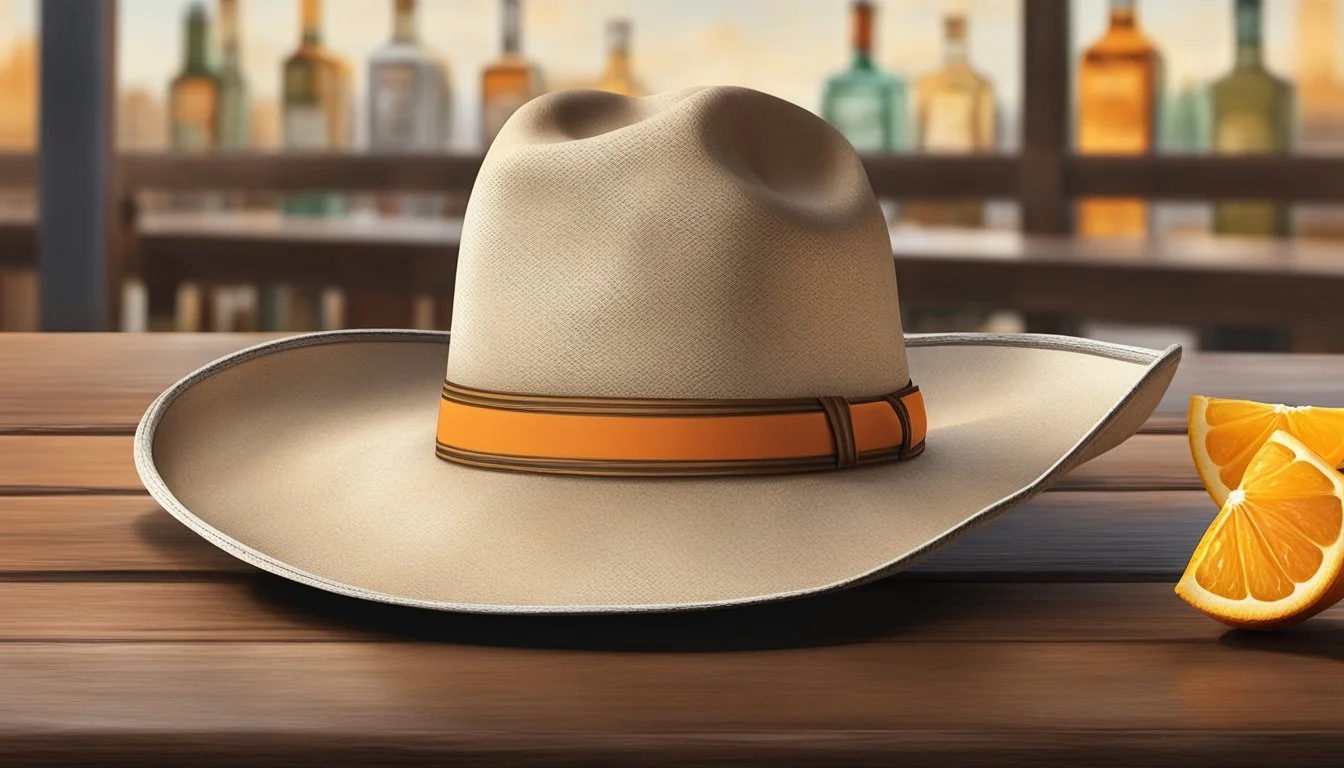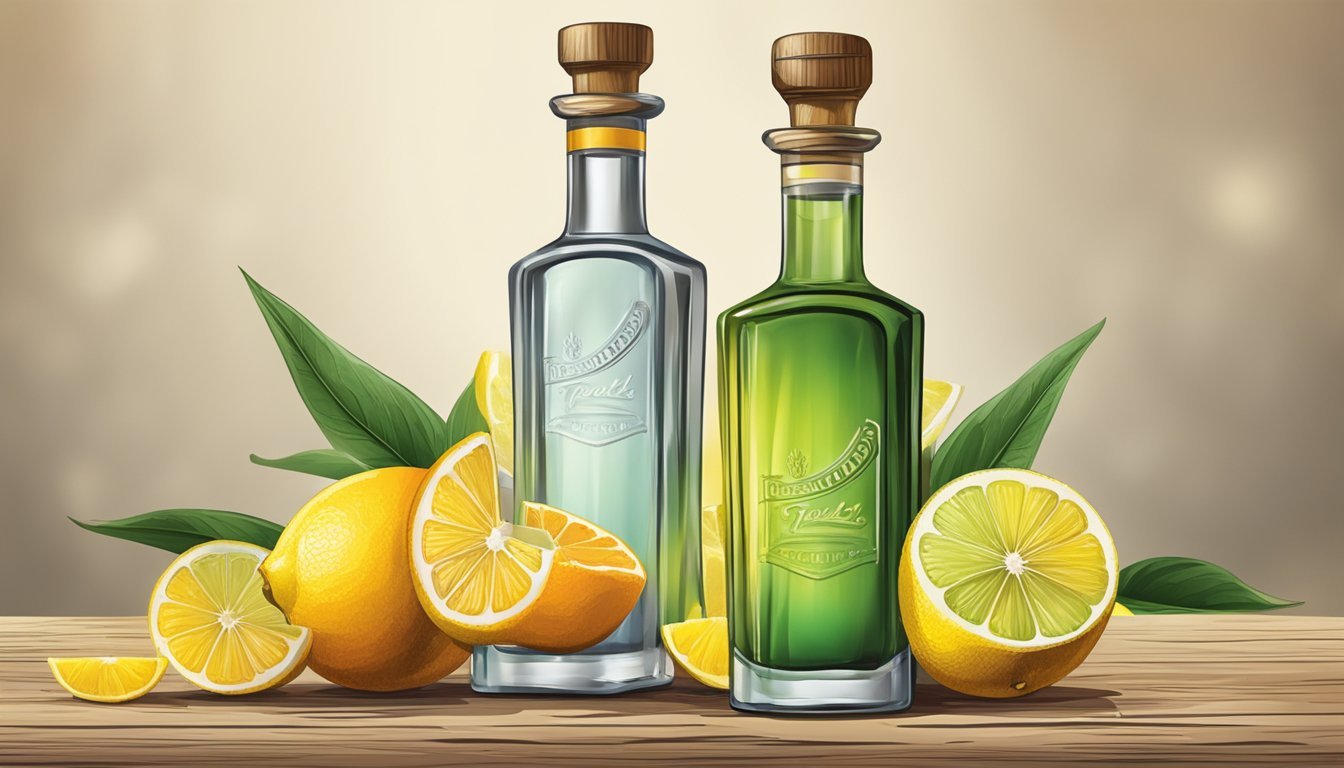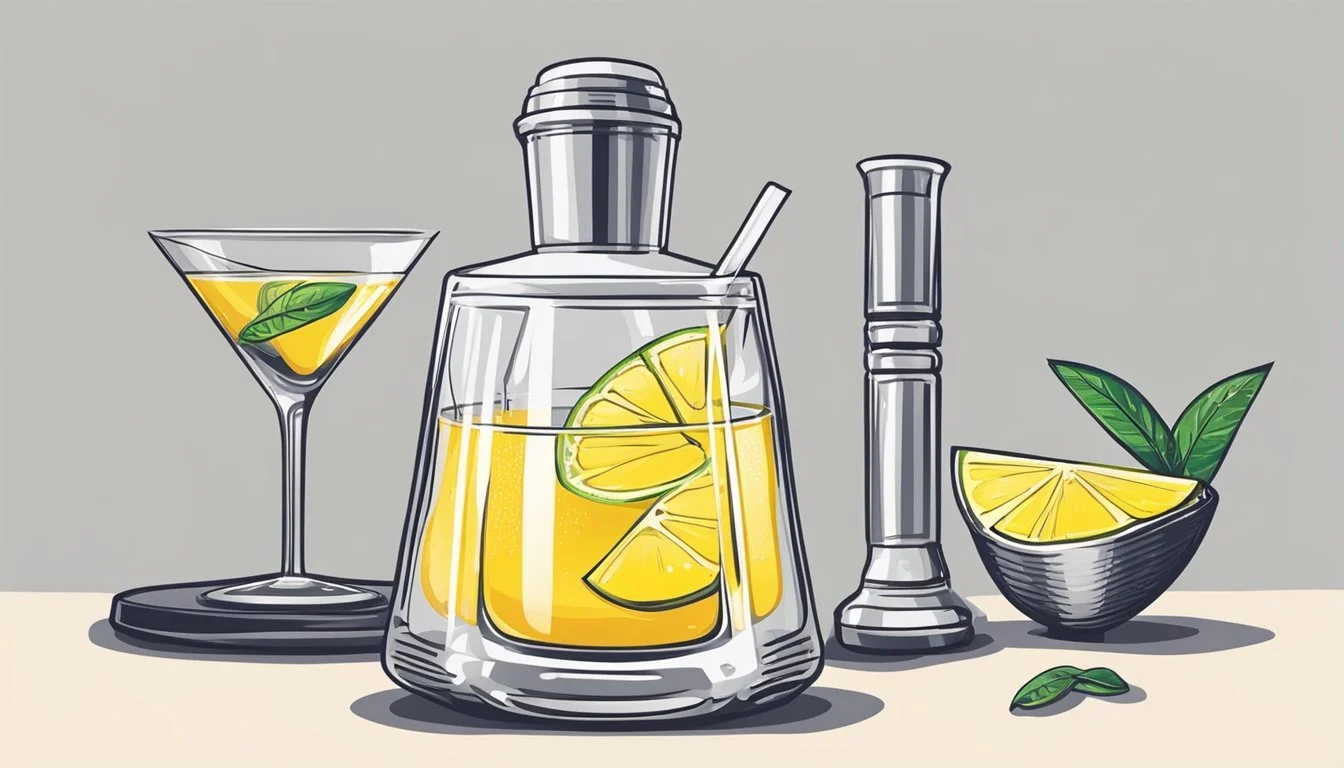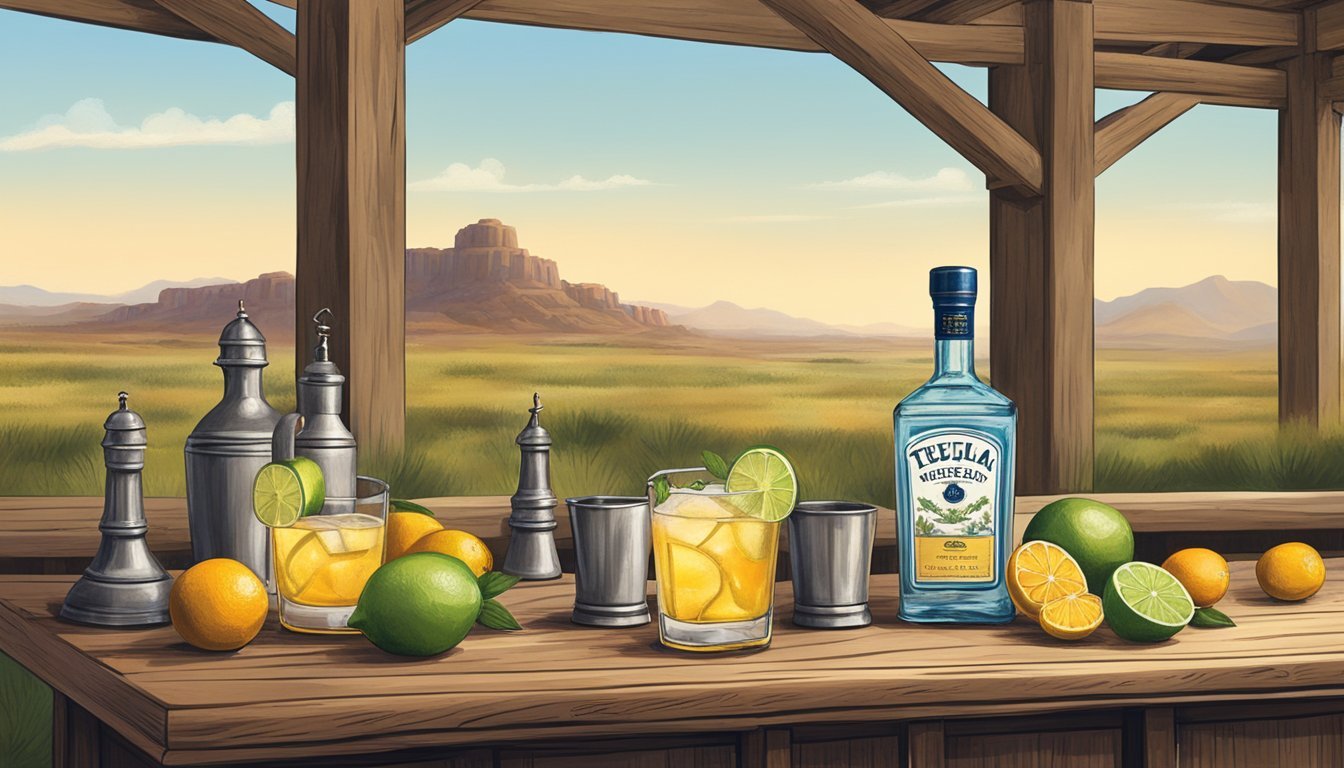The Tequila Sidecar
Reinventing the Classic with Lone Star Flair
The Tequila Sidecar marries the zest of Mexican spirits with the sophistication of a French classic. Traditionally crafted with cognac, the classic Sidecar cocktail epitomizes the harmony of sweet and sour flavors cherished by cocktail aficionados. However, the variant that incorporates Anejo tequila in lieu of cognac introduces a flavor profile that's both familiar and novel. Aged tequila brings a subtle smokiness and notes of caramel to the mix, creating a cocktail with a distinctively smooth yet complex character.
This inventive twist, emerging from the heart of Texas, capitalizes on the state's penchant for bold flavors and its proximity to tequila's homeland, Mexico. The Tequila Sidecar, while paying homage to its French roots through its core components, skillfully incorporates the rich, oak-aged notes of Anejo tequila. The marriage transforms an established classic into an inviting new experience, tailoring it to those who seek a spirited ride with a Southwestern kick.
History and Origins
The Sidecar is a cocktail steeped in history, emerging from the shadows of World War I and evolving through Prohibition. The Texas adaptation reimagines this classic with a regional twist, substituting tequila for the traditional brandy.
The Birth of the Sidecar
The Sidecar cocktail was likely conceived in Paris, with Harry MacElhone often credited for its creation at his bar, Harry’s New York Bar, during the aftermath of World War I. Conflicting reports suggest London as another possible birthplace. The drink's namesake is purportedly inspired by the preferred method of transport for an American Army captain in Paris—a motorcycle sidecar. Traditionally, the Sidecar is based on a mix of brandy—sometimes specified as Armagnac—and Grand Marnier, with a citrus balance provided by lemon juice.
Prohibition and Cocktail Culture
During Prohibition in the United States (1920-1933), the cocktail culture flourished clandestinely, with many American bartenders honing their craft in European cities such as Paris. The Sidecar, with origins deeply rooted in this period, became a symbol of the speakeasy scene. Bartenders in France found a more accepting environment to experiment and perfect cocktails like the Sidecar, which became a staple for those seeking sophistication and a taste of the forbidden.
The Tequila Sidecar: A French Classic Goes Texan
As the Sidecar journeyed to Texas, tequila was introduced as a bold substitute for the traditional brandy or cognac. This Texas twist pays homage to the French classic while capturing the spirit of the Southwest. Tequila's earthy and robust profile pairs uniquely with the sweetness of Grand Marnier and the sharp tang of lemon juice, resulting in a cocktail that resonates with Texan irreverence and frontier spirit.
Key Ingredients and Variations
The Tequila Sidecar elevates a time-honored cocktail with a Texas flair, incorporating premium tequila and a hint of citrus. This section delves into what you’ll need to craft the classic version and its Texan cousin, alongside the variations that tailor the drink to your taste preferences.
Classic Sidecar Cocktail Ingredients
The traditional Sidecar is both simple and elegant, consisting of:
Cognac: Typically, VS or VSOP grade is used for its rich, warming character.
Orange Liqueur: Options here include triple sec, Cointreau, or Grand Marnier for a blend of sweetness and subtle bitterness.
Lemon Juice: Freshly squeezed for a zesty, sour element that brightens the cocktail.
Simple Syrup: Can be used to balance the sourness with a touch of sweetness.
Garnish: Typically, an orange peel or a lemon twist, and a sugar-rimmed glass edge.
The Texas Twist: Tequila as a Substitute
For a bold Texan update, swap out the French cognac for:
Añejo Tequila: Aged in oak barrels, this tequila brings a palate of vanilla and spice, and complements the tang of the lemon with its smooth, oak-influenced warmth.
Common tequila substitutions in the Sidecar recipe include blanco or reposado varieties, which offer a lighter flavor profile compared to the deep complexity of añejo.
Garnishes and Variations
To garnish a Tequila Sidecar, consider the following:
Sugar Rim: A sugared rim on the glass adds texture and sweetness upon each sip.
Orange Peel: A strip of orange peel can enhance the drink's citrus notes and provide an aromatic experience.
Variations to the basic recipe might include the addition of:
Lime Juice: Some prefer a sharper citrus note than lemon can provide.
Orange Juice: To soften and add a different kind of citrus sweetness.
Maraschino: A cherry liqueur, such as maraschino, introduces a fruit-forward and slightly tart flavor component.
Other Garnishes: Lime twists, or even an orange twist, serve as visually appealing and tasty garnishes.
Whether you opt for the classic Parisian creation or its Tequila-infused Texan counterpart, the balance of sweet and sour flavors defines the Sidecar's refreshing and rich profile.
Mixing Techniques and Equipment
When crafting the Tequila Sidecar, each step from shaking the cocktail to garnishing the glass is crucial to achieving the beverage's distinguished taste and presentation.
Shaking vs. Stirring
The Tequila Sidecar is a drink that demands vigor and ice. It must be shaken, not stirred, to properly incorporate the ingredients. A cocktail shaker provides a quick chill and dilution that is essential for balancing the strong flavors of tequila and orange liqueur. Typically, 15 seconds of shaking yields the desired ice-cold temperature and texture.
Glassware Selection
The glass of choice for a Tequila Sidecar is the coupe glass. Its broad bowl allows for an aromatic experience with each sip and supports the well-known sugared rim. Nevertheless, a martini glass may serve as a substitute for an elevated presentation. The key is to select glassware that complements the drink's aesthetics and function, ensuring a comfortable and elegant sip.
Achieving the Perfect Sugar Rim
A sugar rim is not just decorative but also adds a sweet touch to balance the tartness of the drink. Achieving the perfect sugar rim involves:
Wetting the rim with a lemon twist or using a small sponge or lemon juice.
Dipping the rim into caster sugar spread on a plate.
Ensuring the sugar adheres evenly for a consistent taste and look.
This sugared rim acts as the initial taste and sets the stage for the flavors that follow.
Serving and Presentation
The refined serving and presentation of the Tequila Sidecar accentuate both its taste and visual appeal. Mastering the temperature, dilution, and garnishing can transform this classic cocktail into a memorable experience for the palate.
Temperature and Dilution
Serving the Tequila Sidecar at the right temperature is crucial for a balanced flavor profile. The cocktail should be shaken with ice until it's icy cold to achieve a perfect dilution that doesn't overpower the tequila's character. Typically, one would:
Shake the combined liquids for about 15 seconds to ensure a chilled temperature and an optimal dilution.
Strain the mixture into a pre-chilled coupe glass to maintain the low temperature without additional dilution from melting ice.
Garnish Perfection
The garnish on a Tequila Sidecar not only adds visual flair but can also enhance the drinker's enjoyment by appealing to their sense of smell before the cocktail is even tasted. The right garnish can complement the smoky notes of the añejo tequila and the citrus tones.
Garnish Description
Lemon Twist A classic choice that brings brightness and an aromatic citrus note.
Orange Peel Adds a subtle bittersweet depth, wrapped elegantly around a cinnamon stick for a festive presentation.
Sugared Rim Provides a sweet contrast to the cocktail’s tanginess, achieved by running a lemon wedge around the rim of
the glass, then dipping it into sugar.
Each garnish is applied with care to ensure the presentation is as impeccable as the cocktail's balance. The art of garnishing elevates the Tequila Sidecar from a mere beverage to a crafted experience.
Cocktail Variations and Similar Drinks
Exploring the world of cocktails reveals a kaleidoscope of variations and similar drinks that draw inspiration from classics like the Sidecar. This section delves into several notable twists, each offering a unique perspective on the time-honored original.
Between the Sheets
Between the Sheets takes the classic Sidecar formula and introduces a sultry blend by incorporating rum into the mix. The drink is made by combining equal parts of cognac, rum, and orange liqueur with a touch of fresh lemon juice. This results in a cocktail that balances the warmth of cognac with the tropical notes of rum.
The Brandy Crusta and Bourbon Sidecar
The Brandy Crusta is often seen as a precursor to the Sidecar, differentiating itself with a sugared rim and a larger portion of lemon juice. Meanwhile, bourbon enthusiasts might opt for the Bourbon Sidecar, where bourbon replaces the traditional cognac. This substitution offers a richer, more robust flavor profile reminiscent of an Old Fashioned but with the citrus kick of a Sidecar.
Brandy Crusta Ingredients:
2 oz Brandy
1/2 oz Orange liqueur
1/2 oz Lemon juice
Sugared rim for garnish
Bourbon Sidecar Ingredients:
2 oz Bourbon
1 oz Orange liqueur
1/2 oz Lemon juice
Simple syrup (optional)
The White Lady and the Margarita
The White Lady is an elegant cocktail that hews closely to Sidecar's spirit, substituting gin for cognac. With gin, orange liqueur, and lemon juice, the drink offers a lighter, more botanical profile. In contrast, the Margarita, one of the most famous tequila-based cocktails, shares the DNA of the Sidecar with its use of orange liqueur and lemon juice—though traditionally lime is used. It's typically served with a salted rim and can be thought of as the Sidecar's vivacious cousin from south of the border.
White Lady Ingredients:
2 oz Gin
1/2 oz Orange liqueur
1/2 oz Lemon juice
Margarita Ingredients:
2 oz Tequila
1 oz Orange liqueur
1 oz Lime juice
Salt for rimming the glass
Cultural Impact and Popularity
The Sidecar cocktail has traversed from its early 20th-century origins to become a staple in contemporary cocktail culture. With the introduction of the Tequila Sidecar, this classic drink has adapted to regional flavors and trends, reflecting its sustained popularity and the evolving palate of enthusiasts.
Cocktails in the Roaring Twenties and Beyond
The Sidecar cocktail, traditionally made with cognac, orange liqueur, and lemon juice, was a symbol of the Roaring Twenties, showcasing the era's indulgence and flair for fashion. Its creation is often credited to an American Army captain in Paris. After Prohibition ended, the Sidecar maintained its status, becoming a refined choice in the expanding cocktail repertoire.
Modern Day Cocktail Renaissance
Today's cocktail culture witnesses a renaissance, with the Sidecar adapting to new interpretations like the Tequila Sidecar. In Texas, distillers combine local agave spirits with the traditional citrus and liqueur to reinvent the classic. The Tequila Sidecar reflects a fusion of French elegance and Texan boldness, marking its place on menus from upscale bars to home social gatherings.
Tequila Sidecar in Social Media
On platforms such as Instagram, the Tequila Sidecar has made a visual splash. Cocktail enthusiasts share vivid images and recipes, encouraging its spread and popularity among a broader audience. The drink's aesthetic appeal complements the visual nature of social media, often becoming a part of one's fashion statement during gatherings, contributing to the drink's allure and approachability.
Instagram Statistics: Visual content of the cocktail garners high engagement.
Cocktail Culture: The fusion of traditional and regional ingredients highlights adaptability to local tastes.
Popularity: The Tequila Sidecar rides the wave of tequila's growing demand, especially in the US.
Fashion: The cocktail's presentation often reflects current trends, adding to its appeal.
Health Considerations
When considering a cocktail like the Tequila Sidecar, one should take into account both the caloric content of the drink and its alcohol strength. Both factors are important for maintaining a balanced diet and responsible consumption.
Caloric Content of a Sidecar
The caloric content of a Tequila Sidecar can vary depending on the specific ingredients used, but it typically contains between 200 to 300 calories per serving. This estimate includes the combination of añejo tequila, an orange liqueur like triple sec or Cointreau, and lemon juice, as well as any sweeteners such as sugar or syrups that might be added to balance the tartness of the drink.
Añejo Tequila: Approx. 64 calories per 1 oz
Orange Liqueur: Approx. 95 calories per 1 oz
Lemon Juice: Approx. 7 calories per 1 oz
Sweeteners: Calorie content varies (e.g., sugar contains about 16 calories per teaspoon)
Given these figures, consumers should be aware of the cocktail's potential impact on their daily caloric intake.
Alcohol Content and Cocktail Strength
The alcohol content in a Tequila Sidecar is significant due to the presence of both tequila and an orange liqueur. On average, añejo tequila has an alcohol by volume (ABV) of around 40%, while orange liqueurs can range from 15% to 40% ABV.
A standard Tequila Sidecar recipe might include:
2 oz Añejo Tequila: 40% ABV
1 oz Orange Liqueur: 15-40% ABV (depending on brand and type)
1 oz Lemon Juice: 0% ABV (non-alcoholic)
Considering these components, a single Tequila Sidecar can be quite potent. Those enjoying the beverage should keep in mind the cocktail's strength and be mindful of their consumption, especially if they need to drive or operate machinery. Moderation is key in enjoying any alcoholic drink responsibly.
Home Bar Essentials
To master the art of the Tequila Sidecar, the home mixologist needs a curated selection of tools and ingredients. This section lays out the essentials for crafting this storied cocktail, with an emphasis on quality and precision.
Basic Tools and Ingredients
A cocktail shaker is indispensable for integrating the Tequila Sidecar's components thoroughly. One should aim for a shaker that seals well and is easy to handle. In terms of glassware, a coupe glass is traditional and elegant, perfect for presenting this classic drink with a modern twist.
As for ingredients, quality is key. The recipe calls for a balance of tequila, orange liqueur, and fresh lemon juice. A well-stocked home bar should include:
Añejo tequila, aged for depth of flavor
A premium orange liqueur for sweetness and complexity
Freshly-squeezed lemon juice for brightness
To sweeten the cocktail, simple syrup may be preferred by some. This is simply a solution of sugar dissolved in equal parts water. Having both granulated sugar and simple syrup provides flexibility for various recipes, including the Tequila Sidecar.
Advanced Techniques for Home Mixologists
Beyond basic ingredient mixing, advanced techniques can elevate a home bar to professional standards. For instance, mastering the balance of sweetness and acidity is crucial. The Tequila Sidecar traditionally requires a rim of sugar on the glass, which not only adds flavor but also texture to the experience. Carefully twisting a lemon peel over the drink to spritz its oils can add an aromatic dimension that completes the sensory profile of the cocktail.
Conclusion
The Tequila Sidecar reinvents a traditional drink with a Texan spin. Its adaptability makes it suitable for various occasions, from casual gatherings to elegant soirees.
Ingredients:
Tequila: The base of the drink, giving it a bold and earthy flavor.
Orange Liqueur: Adds a touch of citrus sweetness.
Lemon Juice: Provides a refreshing sour element.
Simple Syrup (optional): For those preferring a sweeter taste.
Preparation:
Mix tequila, orange liqueur, and lemon juice in a cocktail shaker with ice.
Strain into a glass, typically rimmed with sugar for an additional sweet contrast.
This cocktail showcases the zest of Texan spirits while honoring the French origin of the Sidecar. Its simplicity should not be underestimated, as the blend of flavors yields a beverage that is both complex and satisfying. It proves that traditional recipes can evolve to embrace local flair, and the Tequila Sidecar stands as a testament to the innovation within cocktail culture.
For aficionados and novices alike, this twist on a classic is a testament to the timeless appeal of well-crafted cocktails. It invites experimentation and personalization, yet maintains the integrity of the original. Whether one sticks to the classic version or ventures into variations with pomegranate or hibiscus, the Tequila Sidecar remains a beloved choice for a refreshing and sophisticated drink.









